Merchant Taylors' School and VE Day
Friday 8th May marks the 75th anniversary of VE day and as the war generation grows fewer in number such occasions take on an increased poignancy. The Headmaster of Merchant Taylors’ during the war was Norman Birley and in his speech at the St Barnabas day commemoration (for some reason held on Wednesday, June 13th) following VE day, he paid tribute to the members of the OMT community:
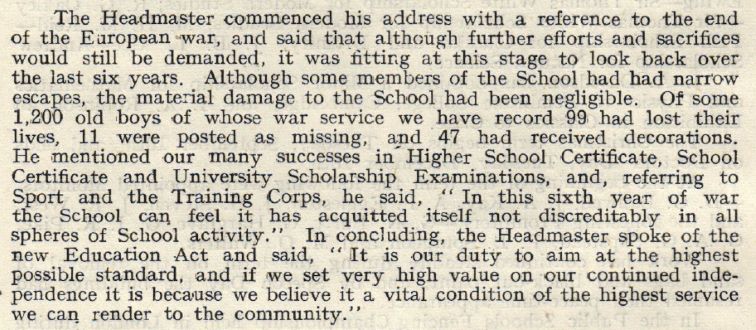 The Taylorian, June 1945
The Taylorian, June 1945
The report noted that Speech day finished with refreshments in the Dining Hall, “a custom that had been sadly missed during the war years”. It is interesting to note that a product of the Education Act referred to in Birley’s speech was the introduction at MTS of Third and Upper Third forms (Years 7 and 8) to allow those from state primaries to enter the School.
The burden of taking the School through the war years took its toll on Birley who retired not long after. But he took the time to publish an account of the School years in the Taylorian of July, 1947, ‘before memories fade’. The account has fascinated generations of MTS Historian since, wondering why there were (and still are) so many pill boxes around the school grounds, including one above the North entrance to the Great Hall. The School was part of the Outer London Defence Ring, rapidly constructed after was declared, in anticipation of a German invasion.
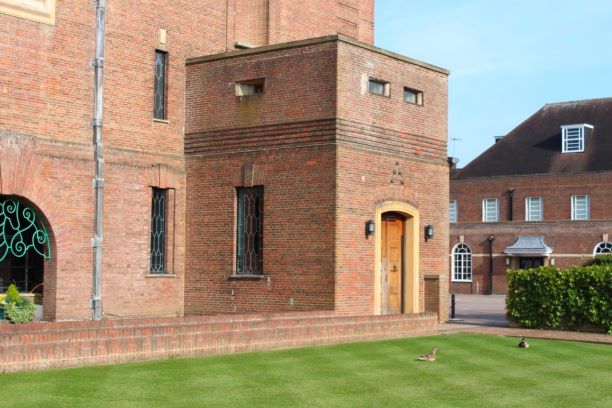
The Great Hall Pill Box remains today, above the north entrance (Photograph by John Harratt)
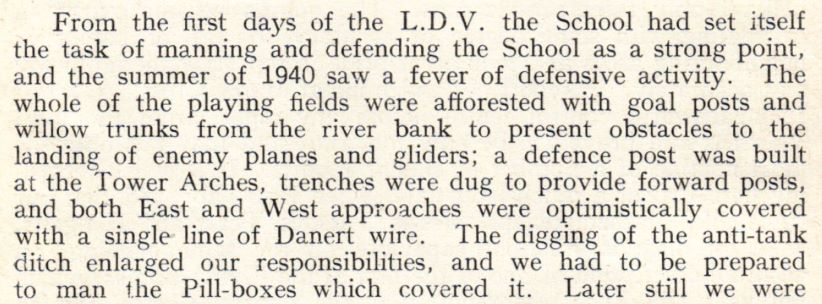 From the Taylorian, June 1947
From the Taylorian, June 1947
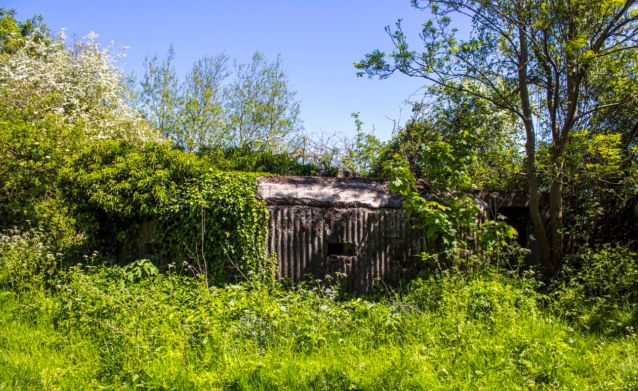 One of several Pill Boxes around the lake (Photograph by John Harratt)
One of several Pill Boxes around the lake (Photograph by John Harratt)
Birley’s article suggests that apart from a few “near misses” (he had a penchant for under-statement) the School had a quiet war. In 1939-40 provision was made for those boys living in London to board temporarily at the School, forming what became known as “School House”. They slept all over the school, including in the south and north lobbies under the Great Hall and in the Exam Hall:
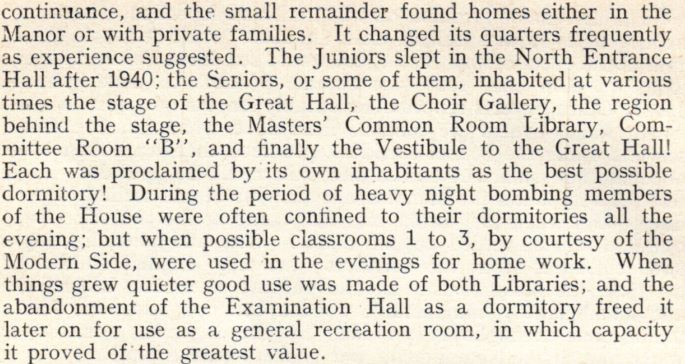 From the Taylorian, June 1947
From the Taylorian, June 1947
The account is fascinating for the small details – the armed guards mounted at the School entrance (complete with rifles and bayonets) who would challenge all visitors. The Observation Post set up at the top of the Great Hall for fire watching, staffed by teachers, boys over 16 and volunteers. Birley gives a vivid picture the Blitz – the fires in London could clearly be seen and an incendiary attack on Watford which suggested “the whole of Watford must burn down”. Otherwise, the School was only troubled by a couple of stray incendiary bombs which fell in the playing fields (“distinguished with disappointing ease”) and a false alarm when it was believed that an enemy aircraft had come down on the School’s playing fields “two hours’ search in a mist proved fruitless – and somewhat damping to their ardour. We learnt later that the plane had come down on the sewage farm to the north of the river”.
Nevertheless, the School played its part in the community – showing that this tradition of support is long established. It established a “Harvest Contingent” whose job was to support farmers at Olney in Buckinghamshire. Although initially greeted with suspicion in 1940, by the end of the war the School had given 50,000 hours of work to support the harvest. Similarly, at this time of national crisis, the School did its best to carry on. The education of the boys was carried on against the background of practical difficulties – including the depletion of the staff. Norman Birley’s final comments about the School during the war have, I feel, a resonance for our generation as we confront our own national crisis:
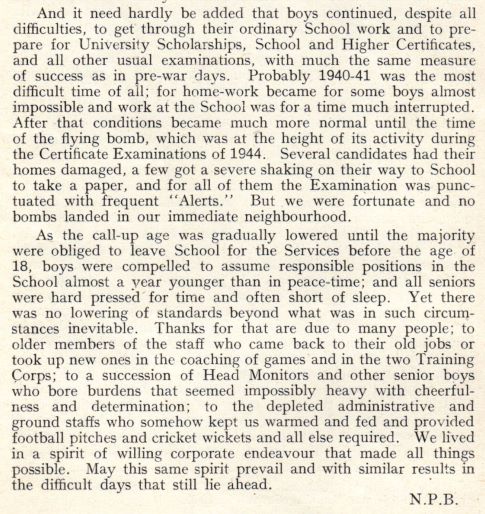
It is often said that the generation of the Second World War was Britain’s greatest. I would like to think that whilst our current challenge is very different, the response of the School to Covid 19 would make the MTS war generation proud.
Norman Birley’s article can be found in full here.
Jonny Taylor, May 2020